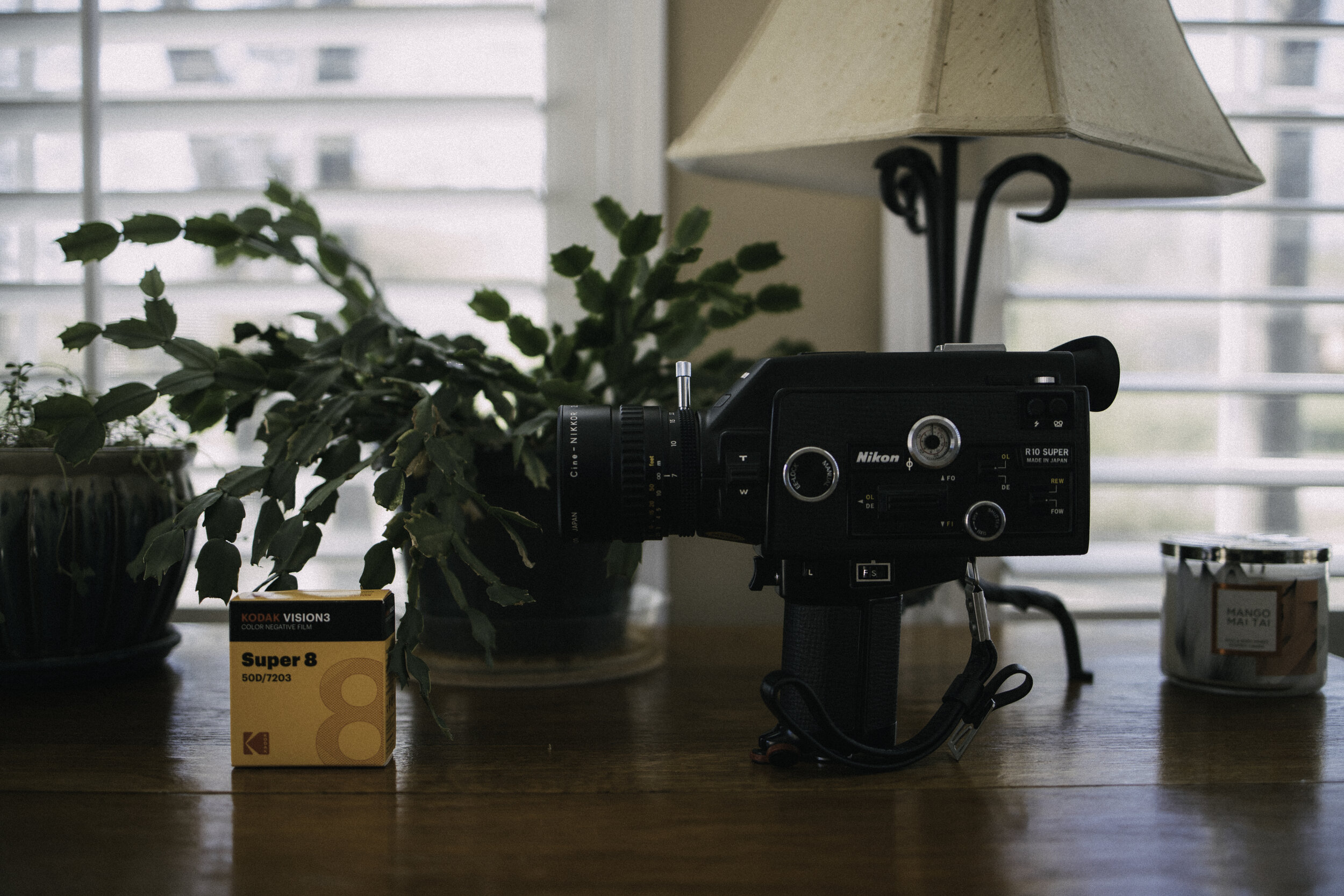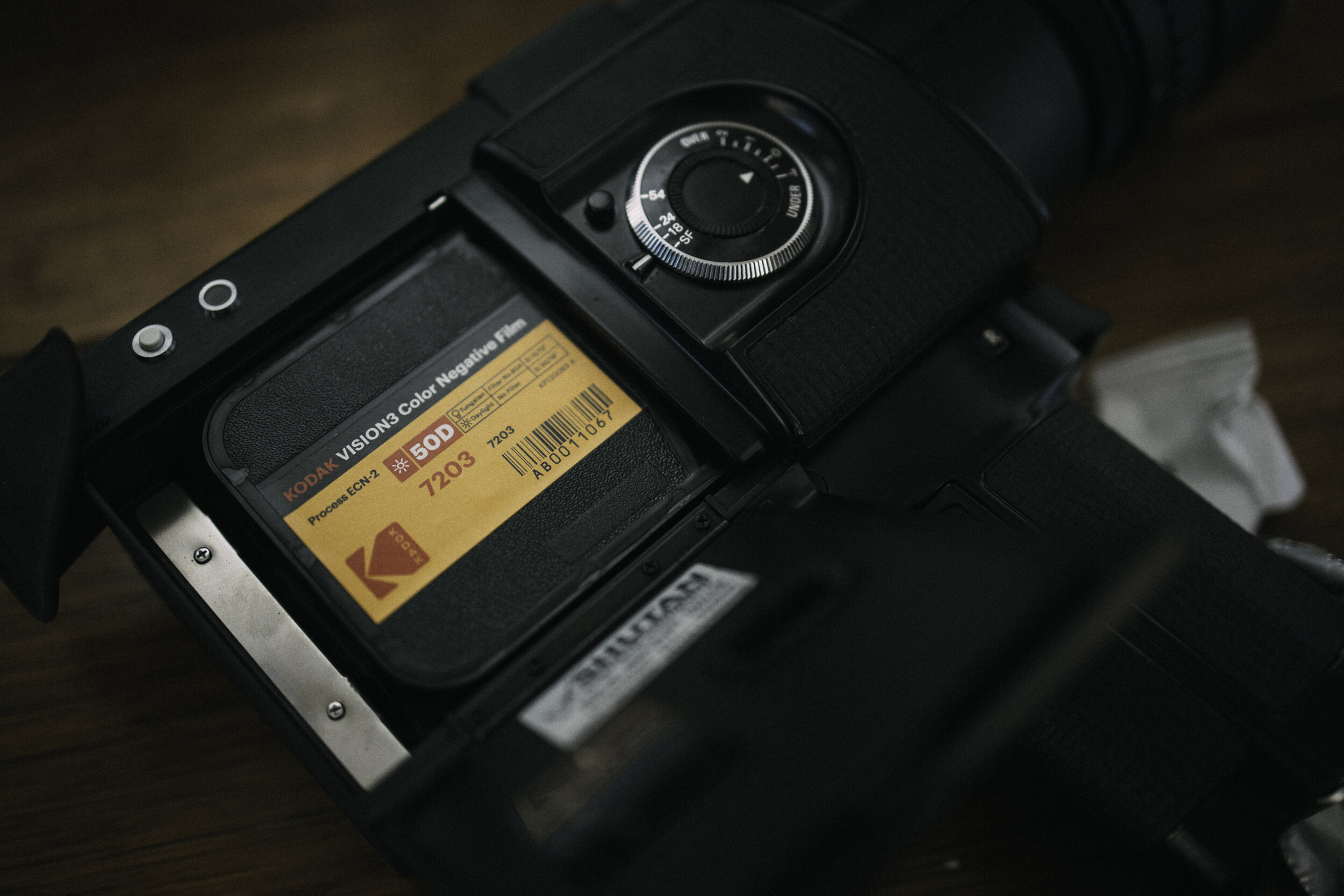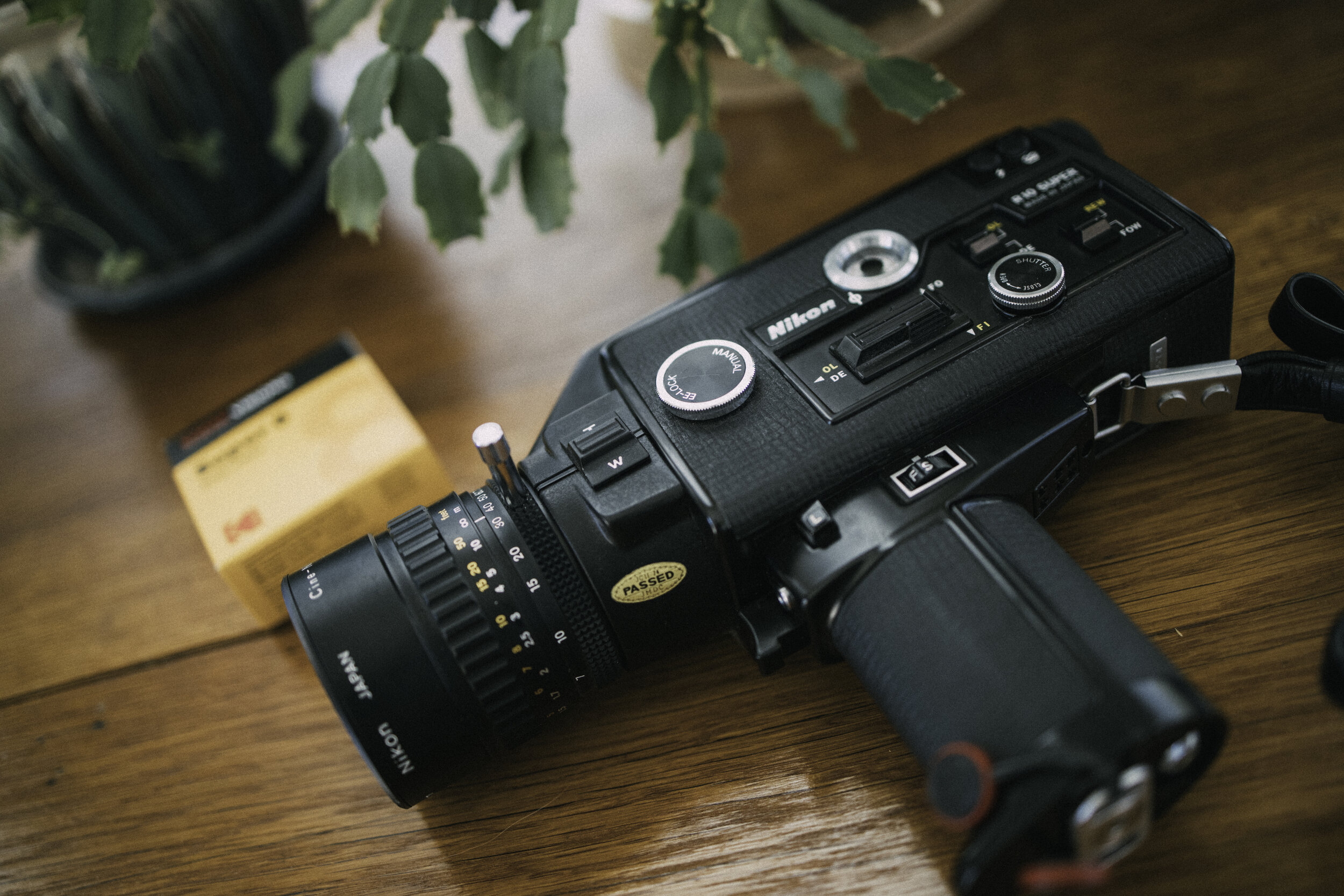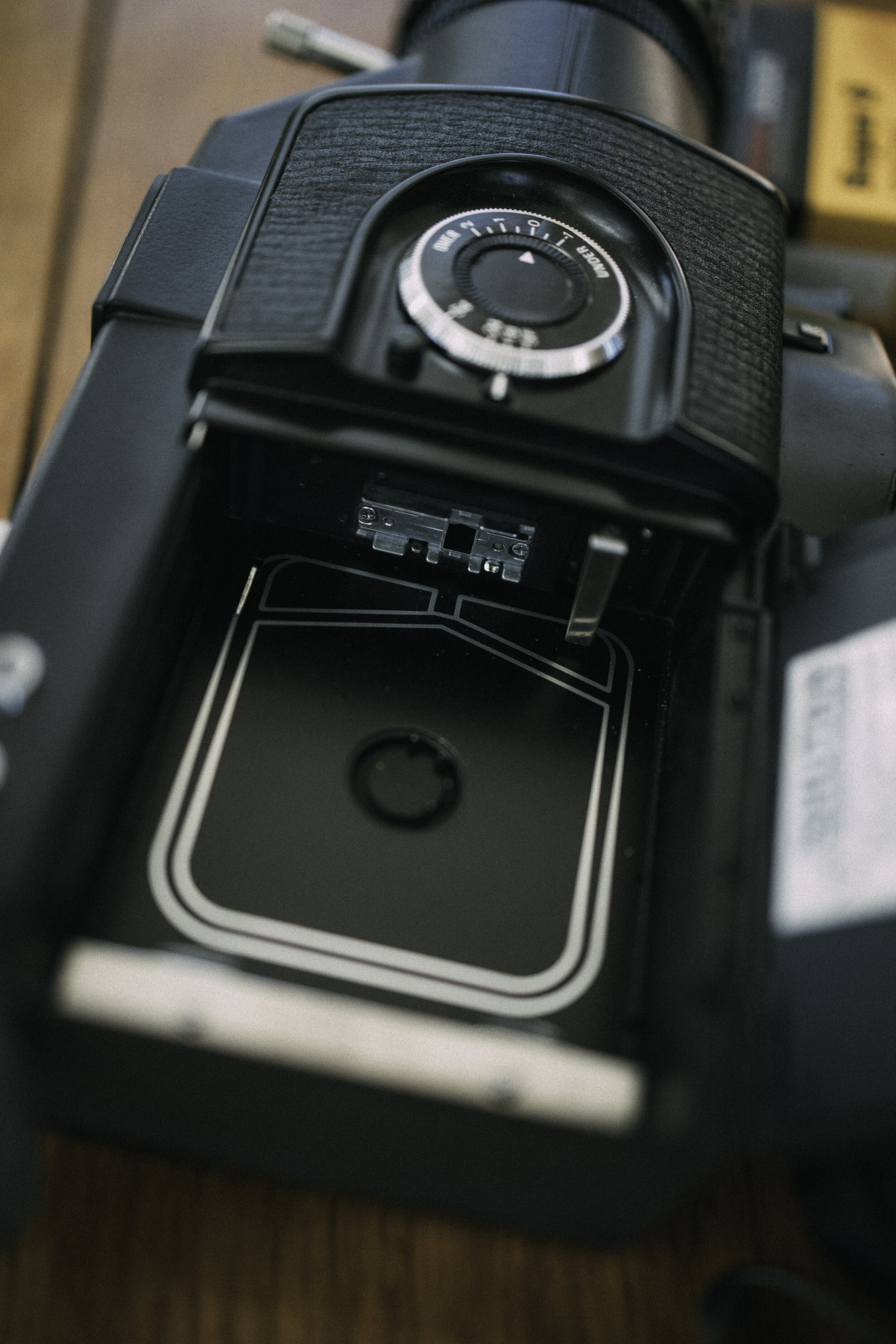Nikon R10 Review - The Cadillac of Super 8 Cameras
The Backstory
I'll admit it; I'm too young to remember the transition from motion film to digital. My parents never had a Super 8 camera, neither did my relatives, and really I don't remember family friends using one either. That said, I do remember the middle ground in that transition...the VHS cameras and Hi8 cameras that graced the shelves and bags of every suburbanite family in the 90's; the "Handycam" style of camcorder. Even without the experience of Super 8 in my childhood, when I see footage from a Super 8 camera, I can’t help but feel warm and fuzzy inside. There’s a quality to Super 8 that’s unlike anything else. We’ll get to that.
Now while we tend to focus extensively on "still" film, here at That Vintage Lens, as a cinematographer by trade, Super 8 and Super 16 film are of tremendous interest to me. To this day, Super 35 film maintains a strong hold on the motion picture industry, despite the ever-growing market-share enjoyed by the likes of Arri and Red digital cameras. For the same reason that many photographers shoot film, professionals filmmakers still shoot film. It’s the feel…it’s the workflow…it’s the experience. It's even shown up in some unlikely places lately, such as Nike Ads, Netflix comedy specials, and others. Motion film is far from dead.
Here are some quick clips from Easter on the R10 and Kodak 50D film.
With all of that said, a few years ago as I was nurturing an ever-growing knowledge of film cameras (along with an ever growing collection of them, might I add), I realized that it was almost absurd of me to not jump into the Super 8 game. Like most film cameras, Super 8 cameras have become ridiculously cheap, at least compared to their original selling prices. Additionally, I've been on a years-long effort to get the company at which I work to shoot more film, both for stills and for motion projects. I would never be able to convince anyone to jump all in on the purchase of a Super 35 camera (we tend to purchase, not rent), so I'd need to start with Super 16 first...and before I jump into that, I'd need to start with Super 8. Thus began the search.
There are a plethora of Super 8 cameras that you can find on the market for fairly low prices these days. They range in complexity as well as reliability and stability, and like any camera purchase, I wanted the best I could get. Now a quick search on the "best Super 8 cameras" easily turned up the name Beaulieu. They're beautiful, they're incredibly built, have incredible manual controls, etc. etc. The problem is, a large amount of Beaulieu cameras used rechargeable batteries (most of which no longer function), they had a few other issues, and compared to most Super 8 cameras, they were expensive. While I did say I wanted the best, at the time I thought "maybe not quite that best." Maybe I want something closer to a compact enthusiast's camera, rather than a professional instrustry workhorse. I kept looking.
Now in the mid-range Super 8 market, Canon is quite well-known. Their offerings are also relatively extensive. The 814's, 1014's, and the like can be found all over eBay. Once again, I just wasn't feeling it. They felt too much like a 90's camera...with a host of buttons on the side, a slightly plasticy feel to certain parts, and just left me with a bit of an "eh" feeling. Yet while Nikon today isn't known in the imaging community for much more than its cameras and lenses, at one time Nikon entered the fray of home movie cameras with quite a bang...and while their offerings aren't quite as prevalent or well-known as Canon's, what I discovered was quite a gem.
Built like a tank, engineered to function flawlessly, and designed with such a beautiful build!
Discovering the R10
You see, somewhere along my journey of research and Google search after Google search, someone mentioned the Nikon R10. "Interesting," I thought. I didn't know that Nikon made motion film cameras. After a little more research, I realized this was exactly what I was looking for: a professional-enough Super 8 camera with a fantastic lens, stellar build quality, reliability, and good looks to boot. Much to my chagrin, when I searched google for the camera, it turned up with one option. ONE. Either everyone was hoarding them, or I just searched eBay at precisely the wrong time. Even today, they’re sometimes difficult to find (sometimes there are 10, and other times none at all), and because they were family cameras, they’re often beat up. With that, I set a search reminder. I can't remember whether it was a couple weeks or a couple months, but eventually a beautiful Nikon R10 in fantastic shape showed up on eBay. I picked it up within the first hour.
When the camera arrived, I wasn't entirely sure what to expect. I'd held the Canon equivalent many times over, but I'd never laid eyes on the R10, so all I had to go on were a few reviews online and hearsay. Unboxing the beauty, however, I couldn't keep from smiling. It felt solid...I mean, really solid, you know? Almost like it was carved from a block of aluminum. This wasn't the chrome-covered plastic of the 90's, and it wasn't a conglomeration of 1000 tiny parts that squeaked a bit when you squeezed it. It reminded me of modern top-tier Nikon DSLR's. In fact, it had basically the same coating as well. If you've used a high-end Nikon DSLR, you know what I'm talking about. It's that powdercoated resilient black texture that makes the camera just feel like quality. I can't emphasize it enough, it feels solid in the hand. If the Beaulieu was the Porsche of Super 8 cameras, the R10 was certainly the Cadillac of them…not a modern Cadillac, but classic ‘50’s Cadillac. You know what I mean. Now since then, my company has picked up an Arri SR3 Super 16 camera. How would I compare the quality? I'd say the Nikon feels as though it's 80% of the quality in a sleeker and much smaller package, and honestly, I don't think that's half bad. Sure I may be talking apples and oranges, but I think it's still a fair comparison in some respects.
The left side of the camera houses the goods. Shutter speed adjustment, film progress dial, manual exposure override, audio and light sync, and more!
Using the Camera
To power the camera, you use one of the most prevalent batteries known to man...the humble AA. To be honest, this is one of the things I love most about the camera. It's so simple. Within the grip, a place slides down to reveal a clip holding 6 AA batteries. I don't have to worry about recharging, and I don't have to worry about getting stuck in the field without proprietary power. It just functions. It also functions for a while. Though I don't have the finances to run through a roll of film every day to test longevity, I can tell you I've put a good 10 rolls through the camera since its purchase, and I'm still on the original AA's. Not bad. A quick word of warning, however, to those looking to purchase. Be sure to ask about battery corrosion damage. From what I understand, this is one of the more prevalent issues with the camera. Also on the grip, you also have a lock to prevent accidental trigger firing, and a speed selector to choose the zoom speed. You have (of course) the trigger, a remote trigger release (threaded), and a 1/4" thread on the bottom in case you'd like to run the camera on a tripod.
Despite its small size, this lens can pack a punch! 7-70mm range, f1.4, and both motorized and manual zoom.
The lens on the camera is fantastic. Perhaps it isn't as good as a solid C-mount prime, but the lens zooms from 7-70mm, all at an aperture of f1.4. Now, because the camera is Super 8, don't get the idea that you'll get 35mm shallow depth of field with that 1.4 lens, but it's impressive nonetheless for a camera as compact as this. Focus is manual, and zoom can be too. In fact, many copies come with a screw-in bar that can be affixed to the zoom and operated by a finger. This allows for quick zooms if you wish, and the built-in motor allows motorized zooms if you'd like as well. Additional note, if you pull the zoom ring forward, the lens settings change to Macro! For those wondering, the lens is indeed parfocal, meaning that if you zoom in to focus, when you zoom out, the object will stay in focus. This is tremendously helpful considering the f1.4 aperture. While you won't get that crazy shallow depth of field, it is possible to miss your focus as the viewfinder doesn't utilize ground glass or focusing aids like an SLR might. While my first roll was crisply in focus, my second roll of film caught me getting lazy. "How out of focus can I be? It's 8mm?" The answer is "enough", I suppose. Check your focus.
While the camera doesn't display a ton of manual controls, I've found that the auto-exposure is actually quite good. Combine that with the latitude and range of film, and if you get it scanned at a good place, just rely on that internal meter. If you do, however wish to run a bit manually, say in tricky lighting situations, there is a manual exposure lock on the side of the camera. Simply pull it out, and turn the knob to adjust the aperture (since shutter speed and film ISO/ASA are relatively fixed). Speaking of film, the camera does read the film speed from the cassette, so don't worry about that. This also brings me to a perhaps obvious, but perhaps necessary piece of information: this camera takes Super 8mm cassettes, not spools. If you're curious as well, it does not record audio onto that film. I should also note (I know, a lot of notes) that while I said the shutter speed was fixed, you do have a bit of wiggle room. You can choose between 160°, 80°, and 40°.
The right side of the camera houses the cassette door, frame rate selections, exposure compensations, and more of that sexy textured metal.
Speaking of framerate, you have a few options there as well. The dial on the side of the camera allows you to choose from four options. When pushing the trigger, this allows you to capture a single frame, footage at 18fps, 24fps, or a fantastic 54fps (in slow-motion). Typically I shoot in 18fps, as it maximizes my filming time (you get about 3 minutes on a Super 8 cassette at 18fps), but if you're matching other footage, you may want to shoot at 24fps. My few shots at 54fps look fantastic with a great slow-motion feel while still keeping that film-look. The only caveats I would note are that it does require more light, and the manual does caution against shooting 54fps for extended periods of time. It's simply too taxing for the camera. On the same lever at which you choose your frame rate, you can also adjust your exposure compensation. I haven't needed to, but it's there if you need it. On that same side of the camera, you also have the battery check button, and the film cassette door. The left side of the camera does have some additional useful features as well. There's the film counter to tell you how far you are to using up your 50ft of film, there's a light sync which turns on an optional external light when you pull the trigger (you can mount one on the cold shoe on top), and an audio sync port, which allows you to synchronize a tape recorder to your camera on trigger pull if you just have to have audio.
Looking through the viewfinder, you won't see much. You have your window for framing and focusing of course, and you have your aperture indicator at the top to let you know what the internal meter is reading or what you've manually set it to. On the right-hand side, you can also see your set shutter speed by means of a bar that will be partially clear, completely clear, or completely covered. At the bottom, you have an indicator that turns orange when you're out of film. Simple! It's everything you need, and nothing you don't. On top of the camera, you'll find a port allowing you to "disengage" a built-in color filter. This filter allows you to shoot tungsten film in a daylight environment without a tremendous blue tint. The camera also has some features that I haven't used, and am not likely to: double exposure, fade in, fade out, and some other things that I consider useless to me, since I'm typically taking the scanned footage to edit together on my own.
Footage and Why Super8
On the topic of footage, if you want to get this developed and scanned at a reasonable resolution, I would estimate $100 per roll from store to computer based on average prices. You might be able to find cheaper, but I can’t be sure. This includes the (average) $30 per cassette of film (slide film like Ektachrome is more expensive), and $70 for shipping, developing and scanning. I use Pro8mm.com out of California, and I’ve never been disappointed. I get back a 4k Pro-Res 4:4:4:4 file, so they aren’t lacking in file quality. I typically get the overframe recording as well, so I can see the sprocket hole in the footage. I like the look, personally. Now a comment on resolution. Should you get it scanned in 4k? Maybe not. Technically most 8mm films aren’t hitting that kind of resolution. I find that 1080p is a fine resolution. Since I get the overscan, however, I get 4k just to be safe.
Our summer party was captured on Super8 (and the R10). We laughed, we danced, we ate ice cream, and captured it on film.
I will say, while you get a more "authentic" feel from using spool film, Super 8 just can't be beat when you're talking about ease of use. I mean, the format was designed for non-tech savvy parents and grandparents who wanted to record home videos...it can't be that complicated. And really, it isn't. That's what I love about the camera. At the moment, I don't shoot much in the way of commercial work on it (although we do occasionally). Instead, I focus on creating family videos. Going to the beach? I'll just grab the Super 8. Driving to Yosemite? Grab the Super 8. Inside a Pelican 1450, I've been able to create a tiny complete package. The case fits the camera, extra batteries, and about 4 packs of film. And really, that's all you need. You won't need a dark bag to spool film, you won't need chargers for powering the camera, and you won't need extra lenses and camera attachments. This is home video as it should be. It takes the thought out of it enough that you can capture a meaningful experience with your kids, with your friends, with your family, and it maintains all the look of film and unique feel of the medium without getting in the way. You don't have to tell family to recreate the moment while you reset the camera, or painstakingly pose people while you adjust your many settings. Just aim it, and pull the trigger...after focusing of course.
To be honest, I'm not exactly sure why the Nikon R10 doesn't get more love. Along with its cheaper brother (the R8, which primarily differs in that it has a worse lens), the R10 is a beautiful, well-built camera that has just the right features for a modern film shooter. I can't imagine finding a more robust package for the price, or something I enjoy holding as much without spending an arm and a leg on a cinema-grade Super 8 cam. To me, Super 8 is designed for family...at least in shooting style. That hand-held pistol-grip look to footage is so unique to this type of camera that it instantly conveys a feeling of nostalgia. Along with the 18fps look that I love on this film, it just makes you feel warm and fuzzy inside in a way that other cameras just can't. Don't believe me? Try putting filters on other home videos. Dress it up all you like. Add grain, adjust the color, take it to 18fps. Now after you've done all that work to make digital look like film, does it feel the same? I would venture to say that you'd get darn close...but not quite there. So all of that said, why do I love shooting this camera? I'm a huge fan of the R10 for a few reasons: Firstly, it allows me to capture home videos with my kids and family friends in a way that is completely unique, and genuinely home-video. The framing doesn’t have to be perfect, the angle doesn’t have to be particularly creative, it just looks right. When my kids are grown, I'll be able to look back at these short films fondly, in a way families have for generations. Sure, I still take small clips on my phone all the time, but this feels different. It is different. Secondly, I love using this camera. It feels like the same quality of the Nikon F series in motion picture form. It's intuitive, it functions flawlessly, it just works...and it looks great doing it. It's a camera I never mind holding in my hands, and it feels like it will last me for decades to come. It's a conversation starter too, but since that goes for most unique film cameras, I'll relieve you of the explanation.
Chances are, if you're shooting commercially, you'll be on Super 16 or Super 35. But when you need that organic home-video feel to make your viewers smile and remember their childhoods and reminisce about the childhoods of their parents and grandparents, Super 8 just can't be beat. If you're looking for a camera that feels professional but has enough automation to operate like a point and shoot when you want it to, the Nikon R10 can't be beat either.
